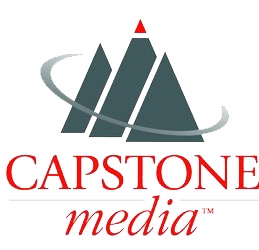Election cycles wreak havoc with local media availabilities, particularly television; so much so over the past decade that Capstone Media actually plans client campaigns around election months, especially in Presidential years. As a swing state Ohio, and Cuyahoga County in particular, are front line targets for this election frenzy.
2012: the year Ohio media almost shut down.
During the 2012 Presidential election, Capstone Media was tapped by CNN’s Martin Savidge to research & discuss the tsunami of advertising dollars poured into this region. Local sales reps from TV, Radio & online all agreed with comments such as, “It’s ridiculous. No one could have predicted this volume.” Or from another 20-year political ad vet, “This is the largest expenditure of dollars in a short period of time in the history of Cleveland broadcasting. I am working 14-hour days, 7 days a week. This election has taken a year off of my life for sure.”
Trying to assess that media blitz was almost impossible at the time, as stations were doing triage just to get through it. The spending in Ohio for 2012 ultimately topped $177 million.
Why does this matter in 2018?
Since every other year brings a major election (either Presidential or Mid-term Congressional seats), the impact of political advertising must be factored into the advertising calendar for clients that depend on election-heavy media to deliver their messages. So media plans for 2018 require a careful eye towards those considerations.
How does the process work?
Practically speaking, much of the communications law involving political advertising involves three categories:
- lowest unit charge
- reasonable access
- equal opportunity
Political clients must be offered the lowest unit rate that anyone has paid for advertising during a given period; a fact that skews negotiated pricing during an election cycle. Since the stations control the pricing, their “lowest” rates tend to be 4-5 times what the market would traditionally bear. Meaning, advertisers can expect to overpay for their media exposure during the run-up to election day.
“Reasonable access” and “equal opportunity” mean that political advertisers have first dibs on media time and space. So commercial campaigns that run during a certain period before an election are subject to getting “bumped” for political ads.
Impact on unit pricing.
While broadcast media pricing is subject to many factors, the most important is the reality of supply and demand. The less inventory available, the higher the cost for that inventory. During an election window, prices can run 100% to as much as 500% higher than during a non-election cycle.
Economic impact on local advertisers.
All political parties talk about supporting small businesses and local economies. So, what is the effect on a local economy when advertising space and time are at a premium, and local advertisers lose their ability to communicate with customers?
Those hurt most are seasonal advertisers that depend on advertising during September & October. Colleges & Universities are big losers, for example, as they count on being able to market to students & parents visiting campuses for open houses. Also, retailers with winterizing services in the automotive and home improvement segments: tires, oil changes, furnace inspections, replacement windows, gutters and roofing. The damage extends to advertisers that count on consistent advertising: Fast Food franchises – most owned by local business people – and auto dealerships.
What should a local advertiser do?
Capstone Media encourages clients to adopt an advertising “blackout” during the 90-day pre-election window for any media where supply and demand is dramatically affected. While this requires a good bit of planning and creativity, Capstone feels that it’s essential in protecting our clients’ investments. Fighting to purchase broadcast time during an election cycle can end up a serious waste of precious client dollars.
In addition, we seek out “non-election” media to help clients continue to reach their customers. If your business is negatively impacted by election cycles, Capstone can create innovative strategies to protect your advertising budget while maintaining your dialogue with target audiences.
Call or email us today to find out what the Capstone difference can mean for your business.

